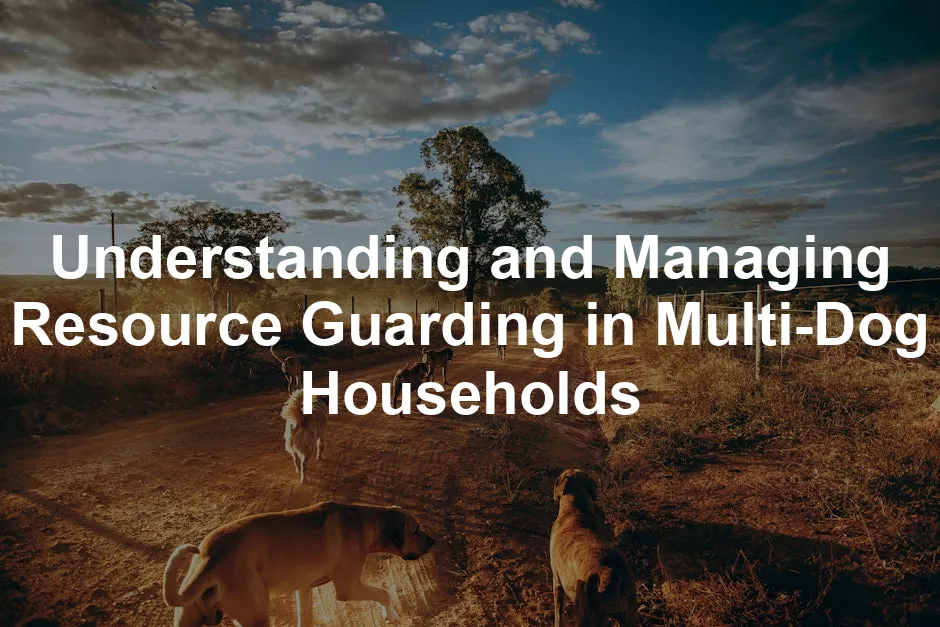Understanding Resource Guarding
Resource guarding refers to a dog’s instinctive behavior to protect valued items. This can include food, toys, space, or even their favorite human! In the wild, this instinct is crucial for survival, ensuring dogs secure their needs. However, in our homes, it can lead to stress and conflict, especially in multi-dog households.
Common triggers for resource guarding often include food bowls, chew toys, and even attention from their humans. Picture this: your dog is happily gnawing on a bone when another dog approaches. Suddenly, they transform from a sweet pup into a fierce defender of their treasure! This can escalate quickly, leading to growling, snapping, or even full-on confrontations. Recognizing these behaviors early is key to preventing them from turning into something more serious.
Understanding that guarding behavior is natural is important. Dogs don’t act out of spite or jealousy; they’re merely responding to their instincts. However, as loving pet owners, we need to manage these behaviors effectively. This involves recognizing the signs early, which can include stiff body posture, intense focus on the resource, or vocalizations like growling.
By approaching the situation with patience and understanding, we can help our dogs feel secure. With the right training techniques for deaf or blind dogs and management strategies, we can create an environment where sharing and harmony reign supreme. Want to ensure a peaceful coexistence among your furry friends? Stay tuned for practical tips and expert advice on managing resource guarding in your multi-dog household!

Using effective training techniques is essential for managing resource guarding in dogs. training techniques for deaf or blind dogs
Causes of Resource Guarding
Resource guarding is a complex behavior with several contributing factors. Understanding these causes is crucial in managing and preventing conflicts in multi-dog households. Let’s break down the most significant elements.
Genetics play a vital role in resource guarding behaviors. Certain dog breeds have innate tendencies to guard resources more fiercely than others. For instance, herding breeds like Border Collies or German Shepherds may exhibit stronger guarding instincts. This behavior is deeply rooted in their ancestry, where protecting resources was essential for survival. So, if you’ve got a feisty little terrier, don’t be surprised if they act like the king of the castle when it comes to their toys!
Past Experiences often shape a dog’s behavior. If a dog has faced food scarcity or intense competition for resources during their formative years, they may carry those experiences into their adult life. Imagine a pup raised in a shelter or a hoarding situation, where every meal was a battle. These dogs may develop a heightened sense of vigilance when it comes to food, toys, or even their owners. Their early struggles can ignite a fire of possessiveness, making them protective of anything they perceive as valuable.
Environmental Factors also play a significant role in resource guarding. Stressful living conditions, lack of socialization, or sudden changes in the household can exacerbate a dog’s guarding behavior. For example, moving to a new home or the introduction of a new family member can trigger anxiety in dogs, leading them to cling more tightly to their resources. Picture the poor pooch trying to adjust while feeling like they’re on high alert! A chaotic environment can increase their need to guard what they hold dear, making your home feel more like a battleground than a safe haven.
In summary, genetics, past experiences, and environmental stresses all contribute to the development of resource guarding behaviors in dogs. Understanding these causes is the first step in creating a harmonious home for your furry friends. By addressing these factors, you can help your dogs feel more secure and less inclined to guard their precious resources. So, let’s jump into the next section and learn how to recognize the signs of resource guarding!
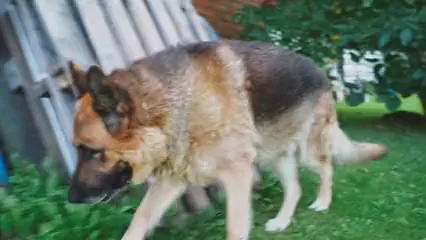
Environmental Management Tools
Creating a peaceful environment in a multi-dog household is crucial for minimizing resource guarding. One effective way to achieve this is through the use of environmental management tools. These include baby gates, crates, and exercise pens.
Baby gates can act as invisible barriers. They can restrict access to certain rooms or areas of the house, allowing dogs to have their own safe space. This is especially useful during mealtimes or playtime, where competition may arise. Consider using a Baby Gate for Dogs to create these boundaries and keep the peace!
Crates serve as a sanctuary for dogs. Think of them as their personal den. When a dog feels overwhelmed, they can retreat to their crate for comfort and security. It’s essential to make the crate a positive space, filled with treats and toys. A Dog Crate can be a great investment for your furry friend’s comfort!
Exercise pens provide a larger, enclosed area for dogs to hang out. This is perfect for playtime, as it prevents dogs from invading each other’s territories. By managing their space, you can reduce stress and the likelihood of confrontations.
Identifying high-risk areas in your home is just as important. Assess places where resource guarding may occur, like near food bowls or favorite toys. Consider rearranging these areas to lessen the chances of conflict. For instance, keep feeding zones separate or use designated play areas for each dog. Remember to keep some Dog Food Storage Containers to keep things organized!
By implementing these tools and strategies, you can create a harmonious environment where all dogs feel safe and secure.
Training Techniques
Positive Reinforcement
Positive reinforcement is a fantastic way to shape your dog’s behavior. This method rewards desired actions with treats, praise, or playtime. The goal is to encourage good behavior while minimizing resource guarding tendencies. Consider using a Dog Training Clicker to make training sessions more effective!
Commands like “leave it” and “drop it” are excellent tools. For instance, when your dog tries to take a toy from another, saying “leave it” can redirect their focus. When they comply, reward them with a treat! Over time, they’ll learn that letting go of their resource brings positive experiences.
Consistency is key! Regular practice helps reinforce these commands. Treat your dog like a superstar every time they respond correctly. It builds their confidence and strengthens your bond.

Desensitization and Counterconditioning
Desensitization and counterconditioning techniques help dogs feel more relaxed around their triggers. Start by identifying what causes your dog to guard. Is it the presence of another dog near their food?
Begin slowly by having the second dog at a distance. Reward calm behavior when they see the other dog. Gradually reduce the distance while continuing to reward. This process helps replace negative associations with positive ones.
Create positive experiences by pairing the approach of the second dog with treats. Over time, your dog will feel less threatened and more at ease. Celebrate small wins along the way!

Trading Protocol
The trading protocol is an effective strategy for managing resource guarding. It involves swapping a valued item for something even better. For example, if your dog has a toy, offer a tasty treat in exchange.
To implement this, always remain calm. Toss the treat away from the item to encourage your dog to move. Once they drop the item to grab the treat, praise them like they’ve just won the lottery!
Tips for success include being consistent and patient. Avoid making the trade feel like a confrontation. The goal is to create a fun and stress-free experience for your dog.
Over time, your dog will learn that relinquishing items leads to rewards. This approach not only reduces guarding behaviors but also fosters trust. Want to reward your dog while training? Consider using a Dog Training Treat Pouch to keep those treats handy!
By using positive reinforcement, desensitization, and the trading protocol, you can effectively manage resource guarding. These methods create a more harmonious environment for all your furry friends.

Case Studies and Real-Life Examples
Resource guarding can be a challenge in multi-dog households, but countless pet owners have successfully managed this behavior. Take the story of the Johnson family, who welcomed a rescue dog named Max into their home. Max initially displayed severe resource guarding, particularly over food and toys. The family observed growling and tense body language whenever their other dog, Daisy, approached. Instead of panicking, they sought advice from a professional trainer.
Through positive reinforcement training, they taught Max to associate Daisy’s presence with good things. They rewarded him with treats and praise whenever Daisy was nearby during mealtime. Over time, Max learned to relax and share his space, turning growls into wags. Their journey taught them the importance of patience and consistent training.
Another case involves Lisa, who adopted two puppies at the same time. She quickly noticed that one puppy, Bella, became possessive over their shared toys. The tension was palpable, with Bella snapping at her sibling, Charlie. Lisa implemented a simple trading protocol, where she would swap a toy Bella guarded for a high-value treat. Soon, Bella learned that giving up her toy led to even better rewards. This simple exercise fostered trust and cooperation between the pups.
Pet owners often share valuable lessons from their resource guarding experiences. A testimonial from Mike, who has three dogs, highlights the importance of structured feeding routines. He says, “Feeding them separately was a game changer! I used to dread mealtime, but now they can enjoy their food without the stress of competition.” This approach not only reduced guarding but also allowed each dog to feel secure during meals. And to make mealtime even easier, consider a Multi-Dog Feeding Station!
These stories illustrate that with the right management strategies, resource guarding can be effectively addressed. Each case reflects the need for understanding, patience, and creativity in training. Whether it’s through positive reinforcement, trading protocols, or structured routines, success is possible.
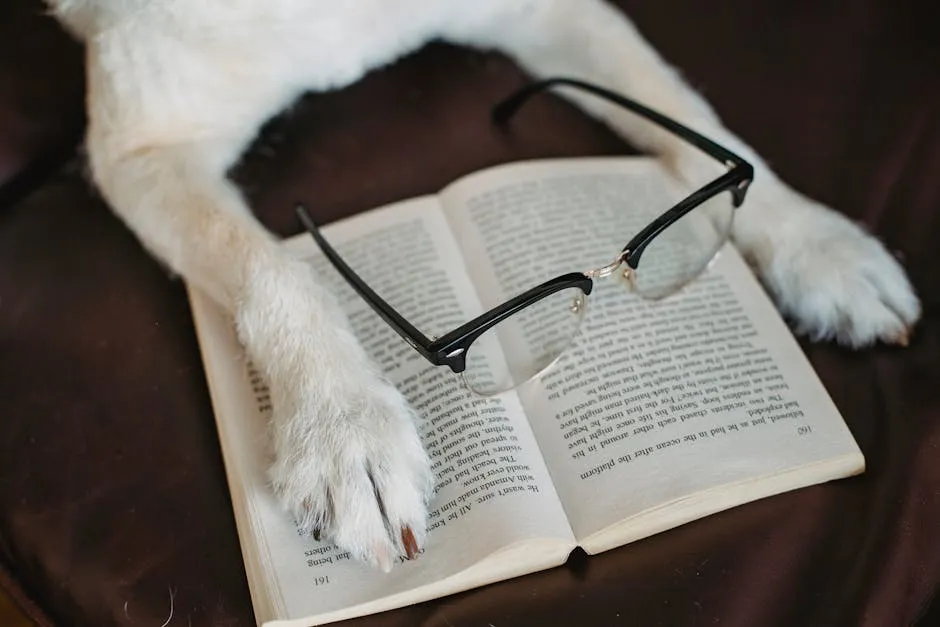
Special Focus: Multi-Dog Household Dynamics
Managing Inter-Dog Relationships
Resource guarding can strain relationships between dogs. When one dog perceives a threat to their prized possessions, it can lead to conflicts that disrupt the harmony of the household. Recognizing that resource guarding is instinctual helps in understanding how to manage these dynamics effectively.
One strategy to promote positive interactions is to ensure that each dog has their own space and resources. Providing separate feeding areas can significantly reduce competition. When dogs feel secure in their own zones, the likelihood of guarding behaviors diminishes. Additionally, supervised playtime helps to foster positive associations and builds trust among the dogs. And to keep those playtimes safe, consider a Dog Playpen!
Another method is to engage in activities that promote teamwork. Puzzle toys that require cooperation can encourage dogs to work together rather than compete. This not only strengthens their bond but also helps reduce guarding tendencies. A great option is an Interactive Dog Puzzle Toy that will keep them entertained!
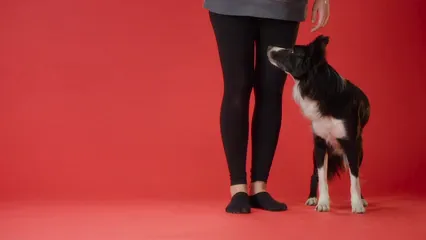
Building a Cohesive Pack
Establishing clear pack leadership is essential in multi-dog households. Dogs thrive on structure and knowing their place in the hierarchy. However, this doesn’t mean using aggression or intimidation. Instead, focus on establishing leadership through positive reinforcement and consistent routines.
Encouraging cooperative behaviors is vital. One effective way to do this is by training all dogs together. Group training sessions not only promote good manners but also reinforce that sharing is rewarding. When dogs learn to follow commands like “leave it” or “come,” they become more confident and less likely to guard resources. For an extra edge, consider using a Dog Training DVD to master those commands!
Additionally, creating a calm environment can foster cooperation. Ensure that high-energy playtime is followed by quiet time, allowing dogs to relax and recharge. This balance reduces stress and minimizes the need for guarding behavior.
Remember, managing resource guarding in multi-dog households requires a thoughtful approach. By focusing on inter-dog dynamics and fostering a cohesive pack, pet owners can create an environment where sharing and harmony thrive.
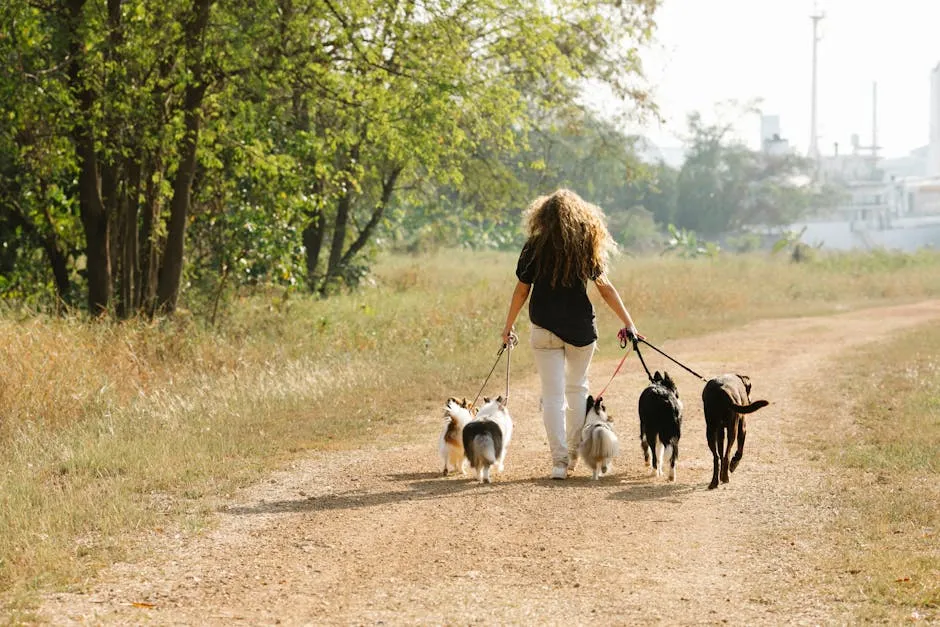
Conclusion
Managing resource guarding in multi-dog households is a balancing act requiring understanding, patience, and proactive strategies. By recognizing the signs of this instinctual behavior, pet owners can take meaningful steps to mitigate conflicts. Implementing effective training techniques, like positive reinforcement and desensitization, fosters a sense of security among dogs. Additionally, creating a harmonious environment, such as designating separate feeding areas and using management tools, can significantly reduce competition.
Every dog is unique, and what works wonders for one might not suit another. Tailoring your approach is essential. Remember, the goal is to transform your home into a peaceful sanctuary where every furry family member feels secure and loved. With the right mindset and techniques, you can ensure a stress-free coexistence among your four-legged friends. Celebrate the joy of a multi-dog household by nurturing their bonds and watching them thrive together!

FAQs
What should I do if my dog exhibits resource guarding behavior?
If your dog shows signs of resource guarding, immediate intervention is crucial. Start by removing the trigger, such as toys or food, to prevent conflicts. Use positive reinforcement to encourage calm behavior. Train commands like “leave it” or “drop it” to redirect their focus. Always supervise interactions between dogs, and consider feeding them separately to reduce competition. This proactive approach helps maintain harmony and safety in your home.
Can resource guarding be completely eliminated?
Resource guarding can be challenging to eliminate entirely, as it’s a natural instinct in dogs. However, with consistent training and management techniques, you can significantly reduce its occurrence. Setting realistic expectations is important; focus on minimizing aggressive behaviors and fostering a more relaxed environment. Many dogs learn to share resources better over time, especially with positive reinforcement.
When should I seek professional help?
If resource guarding escalates into aggressive behavior, it’s time to seek professional help. Signs that indicate the need for a trainer include frequent growling, lunging, or snapping. Additionally, if you feel overwhelmed or unsure about managing the behavior, consulting a qualified trainer or behaviorist can provide tailored strategies and support. Early intervention can prevent further complications and ensure safety for all pets involved.
Are certain breeds more prone to resource guarding?
Yes, some breeds tend to be more predisposed to resource guarding behaviors. Breeds with strong guarding instincts, like herding dogs, terriers, and certain working breeds, may exhibit this behavior more frequently. However, individual temperament and past experiences also play a significant role. Understanding your dog’s breed tendencies can help inform your training approach and management strategies, ensuring a tailored solution for your unique situation.
Please let us know what you think about our content by leaving a comment down below!
Thank you for reading till here 🙂
All images from Pexels

